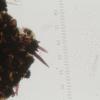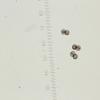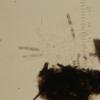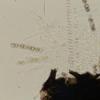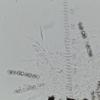
29-12-2025 08:30
Hello.A tiny ascomycete sprouting under Juniperus

29-12-2025 09:38
Oskari VirtanenHi,could anyone help me identify this, I suspect P

28-12-2025 12:08
Margot en Geert VullingsThis possible Karstenia was found on the bark of d

21-12-2025 21:32
Pol DebaenstHello, Garden, Burgweg 19, Veurne, BelgiumOn 10/1

26-12-2025 21:19
Arnold BüschlenPithyella chalaudii Priou. Ist als Bryoparasit in

21-12-2025 09:32
Hello.A tiny ascomycete found embedded in wood in

18-12-2025 21:17
Pol DebaenstThe identification took me to Byssonectria deformi

24-12-2025 17:08
Hulda Caroline HolteHello, I have found this propoloid ascomycete on
Hello,
I am struggling with a very characteristic ascomycete. Maybe someone can provide a clue. It is probably cleistothecial. The ascomata are globose, non-collabent when dry, with short setae, and appear to be associated with a reddish brown anamorphic state, which can be seen in the macro photos. The spores are very characteristic, ovoid in outline, 1-septate, and brown, 5-5.5 x 4-4.5 µm. Asci unitunicate without a well developed apical apparatus, IKI and KOH + IKI negative. Found inside Sambucus bark in Sweden. Scale bars = 10 um.
Many thanks in advance!
Ibai.
Thank you Thomas!
I will search in that direction.
Cheers,
Ibai.
I have found something similar in PEI Canada. Check Reblova, 2002. Synaptospora olandica. Sydowia 54:282-285.
Good luck.
Adrian Carter
Thank you for the tips! Yes, it must be a Synaptospora. Following Reblova´s key in Sydowia, it keys out as S. olandica, but I did not see spores fusing in pairs, and they look like darker even within asci. The anarmorph state I have seen fits the one described by Reblova for S. olandica, but the conidia were not septate. I will leave it as S. cf. olandica for now.
Thank you all!
Cheers,
Ibai.

OOOOH hey, maybe you can send me this collection for study? It is maybe the same found on freshwater logs in austria, where I did not manage to find any more fruitbodies.
This species was originally identified by Fournier with probably acuatic ecology. I think we do not know if it really belongs to Helminthosphaeria, but I guess it does.
regards,
björn
Oh yes, thanks! Your fungus looks the same! The specimen is in UPS but I can try to make it available for you. I will email you privately on this.
Cheers!
Ibai.
I accidentally collected something similar but it is probably closer to Synaptospora olandica. It was not on a broad-leaved tree but on the bare wood of Picea abies (mountain forest in the Czech Republic). Sporocarps are clearly less than 0.5 mm wide, max. 0.2 - 0.3 mm. Photos and a drawing are attached.
I have no experience with these species. What do you think about it?
Thanks,
Vaclav

to ID an unkwon ascomycete, photos of microstructures will always help. I can hardly interpret how the spores had looked like under the microscope, each species has its own characteristics, even if these are very inconspicuous. On drawings these features get lost quickly (unless you draw so brilliantly that it looks like a photo...).
regards,
björn
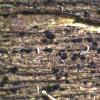
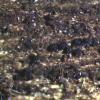
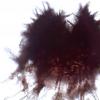
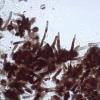
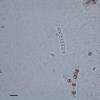
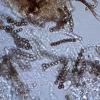

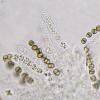
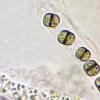

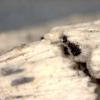
 synaptospora-0002.PDF
synaptospora-0002.PDF